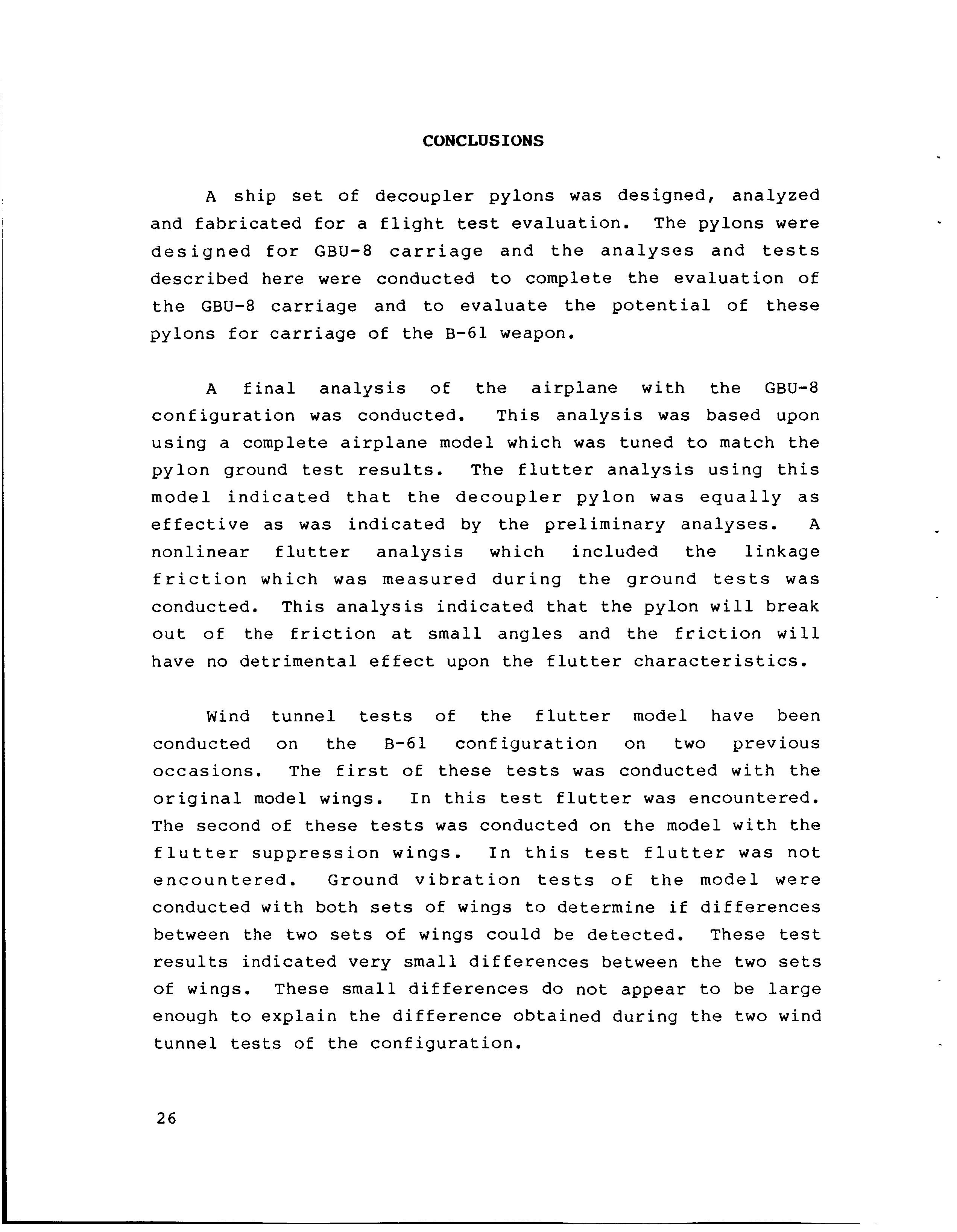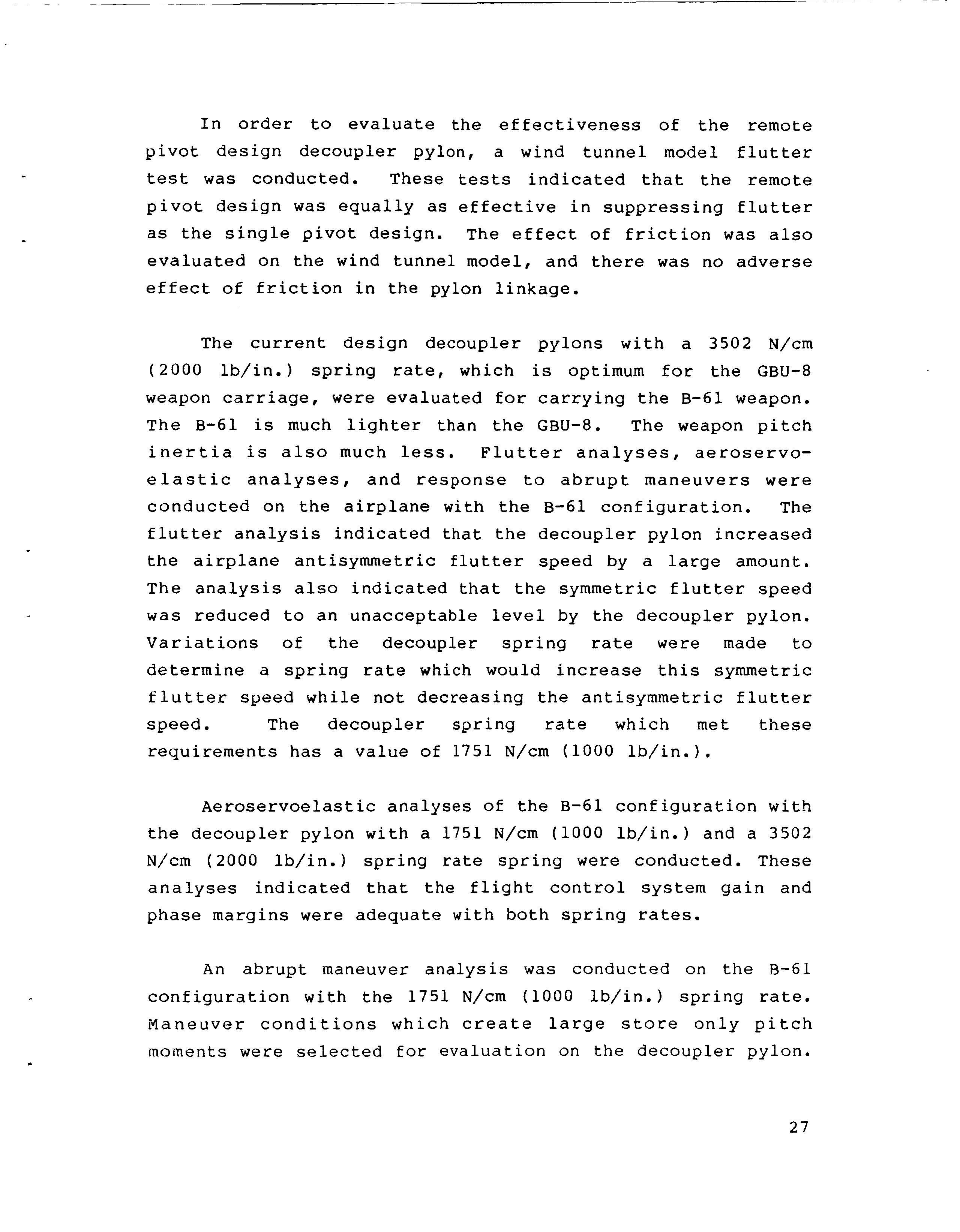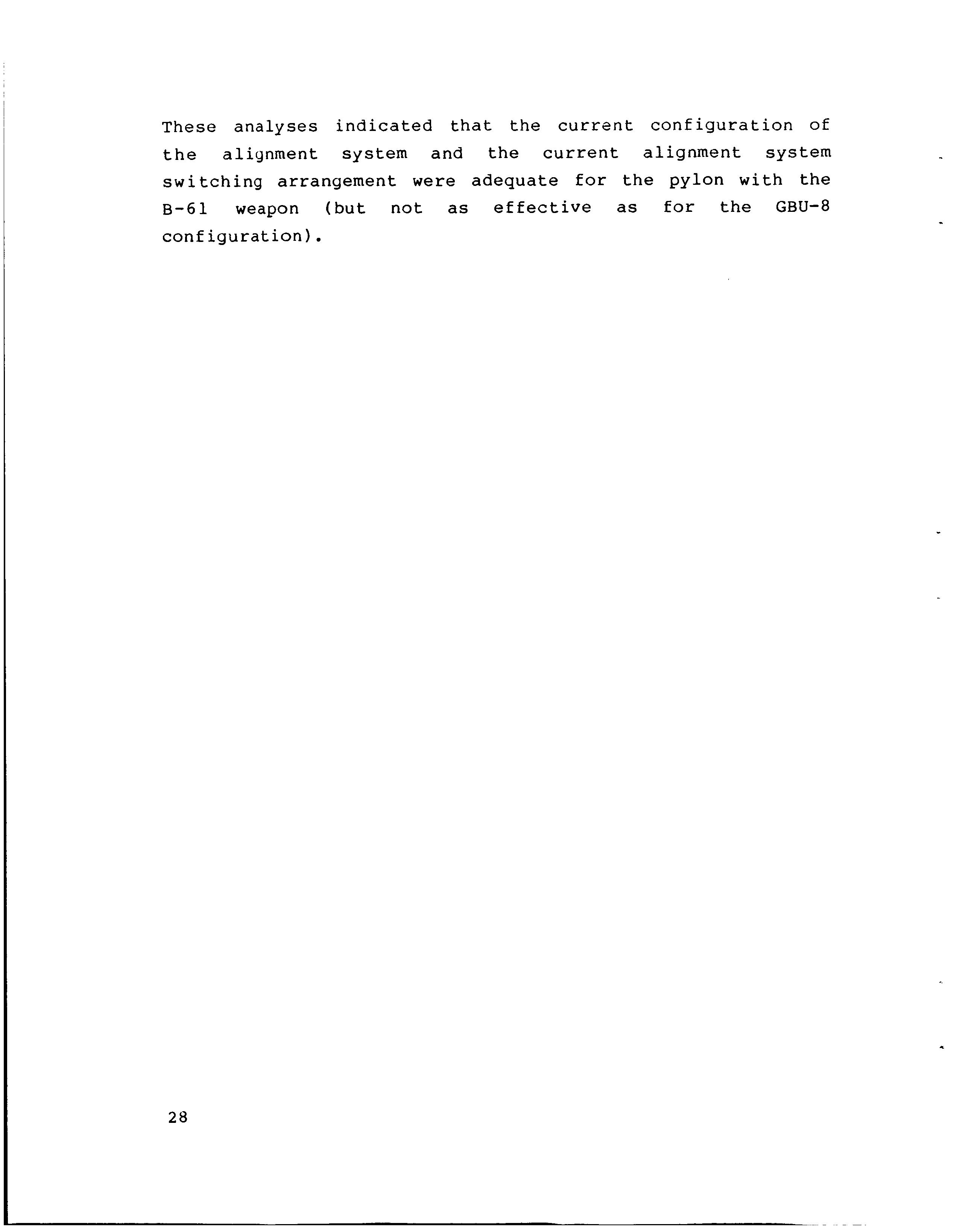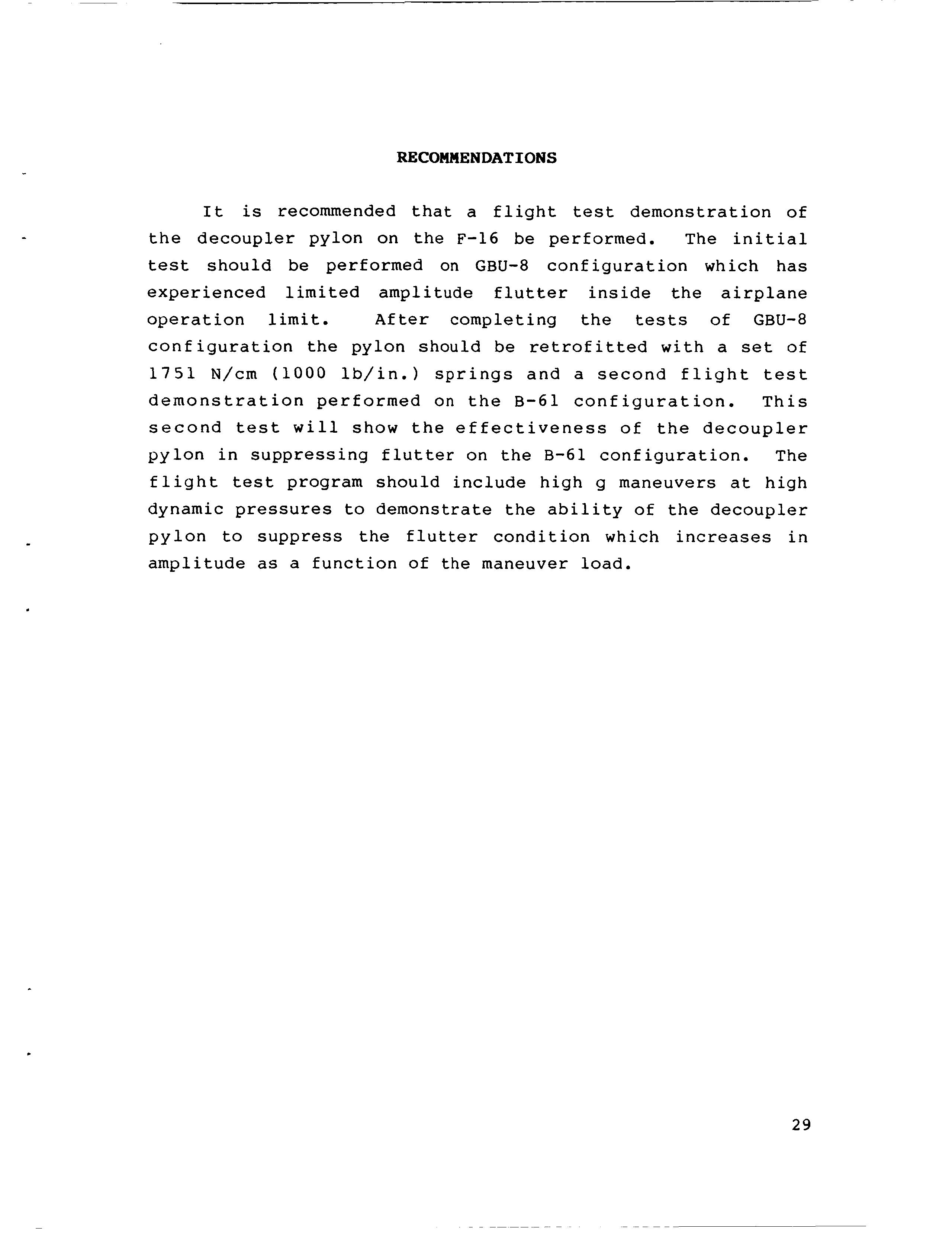
3 minute read
CONCLUSIONS
from NASA Technical Reports Server (NTRS) 19870001427: Design and fabrication of the NASA decoupler pylon
CONCLUSIONS
A ship set of decoupler pylons was designed, analyzed and fabricated for a flight test evaluation. The pylons were designed for GBU-8 carriage and the analyses and tests described here were conducted to complete the evaluation of the GBU-8 carriage and to evaluate the potential of these pylons for carriage of the B-61 weapon.
Advertisement
A final analysis of the airplane with the GBU-8 configuration was conducted. This analysis was based upon using a complete airplane model which was tuned to match the pylon ground test results. The flutter analysis using this model indicated that the decoupler pylon was equally as effective as was indicated by the preliminary analyses. A nonlinear flutter analysis which included the linkage friction which was measured during the ground tests was conducted. This analysis indicated that the pylon will break out of the friction at small angles and the friction will have no detrimental effect upon the flutter characteristics.
Wind tunnel tests of the flutter model have been conducted on the B-61 configuration on two previous occasions. The first of these tests was conducted with the original model wings. In this test flutter was encountered. The second of these tests was conducted on the model with the flutter suppression wings. In this test flutter was not encountered. Ground vibration tests of the model were conducted with both sets of wings to determine if differences between the two sets of wings could be detected. These test results indicated very small differences between the two sets of wings. These small differences do not appear to be large enough to explain the difference obtained during the two wind tunnel tests of the configuration.
26
In order to evaluate the effectiveness of the remote pivot design decoupler pylon, a wind tunnel model flutter test was conducted. These tests indicated that the remote pivot design was equally as effective in suppressing flutter as the single pivot design. The effect of friction was also evaluated on the wind tunnel model, and there was no adverse effect of friction in the pylon linkage.
The current design decoupler pylons with a 3502 N/cm (2000 lb/in.) spring rate, which is optimum for the GBU-8 weapon carriage, were evaluated for carrying the B-61 weapon. The B-61 is much lighter than the GBU-8. The weapon pitch inertia is also much less. Flutter analyses, aeroservo- elastic analyses, and response to abrupt maneuvers were conducted on the airplane with the €3-61 configuration. The flutter analysis indicated that the decoupler pylon increased the airplane antisymmetric flutter speed by a large amount. The analysis also indicated that the symmetric flutter speed was reduced to an unacceptable level by the decoupler pylon. Variations of the decoupler spring rate were made to determine a spring rate which would increase this symmetric flutter speed while not decreasing the antisymmetric flutter speed. The decoupler spring rate which met these requirements has a value of 1751 N/cm (1000 lb/in.),

Aeroservoelastic analyses of the B-61 configuration with the decoupler pylon with a 1751 N/cm (1000 lb/in.) and a 3502 N/cm (2000 lb/in.) spring rate spring were conducted. These analyses indicated that the flight control system gain and phase margins were adequate with both spring rates.
An abrupt maneuver analysis was conducted on the R-61 configuration with the 1751 N/cm (1000 lb/in.) spring rate. Maneuver conditions which create large store only pitch moments were selected for evaluation on the decoupler pylon.
27
These analyses indicated that the current configuration of the alignment system and the current alignment system switching arrangement were adequate for the pylon with the B-61 weapon (but not as effective as for the GBU-8 configuration).
28

RECOMMENDAT IONS
It is recommended that a flight test demonstration of the decoupler pylon on the F-16 be performed. The initial test should be performed on GBU-8 configuration which has experienced limited amplitude flutter inside the airplane operation limit. After completing the tests of GBU-8 configuration the pylon should be retrofitted with a set of 1751 N/cm (1000 lb/in.) springs and a second flight test demonstration performed on the B-61 configuration. This second test will show the effectiveness of the decoupler pylon in suppressing flutter on the B-61 configuration. The flight test program should include high g maneuvers at high dynamic pressures to demonstrate the ability of the decoupler pylon to suppress the flutter condition which increases in amplitude as a function of the maneuver load.
29











